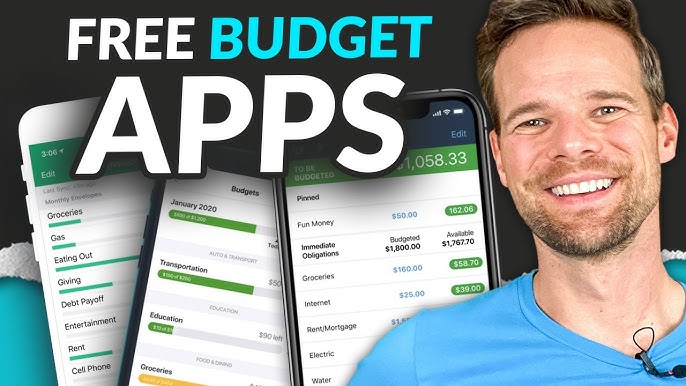How to Save Money Fast: 10 Smart Tips That Actually Work in 2025
Saving money doesn’t have to feel like a struggle. Whether you’re trying to build an emergency fund, plan a trip, or pay off debt, knowing how to save money fast—and stick to it—can make all the difference.
In 2025, with rising living costs and financial uncertainty, smart money-saving strategies are more important than ever. The good news? You don’t need to be rich or a financial expert to save money—you just need a plan.
Let’s break down 10 realistic, actionable tips that actually work.
💰 1. Track Your Spending (You Can’t Save What You Don’t See)
Before you can save, you need to know where your money is going. Most people underestimate their spending, especially on small things.
✅ Action Step: Use a free app like Mint, YNAB, or your bank’s built-in tracker to monitor every rupee or dollar spent.
🔍 Look for patterns: Eating out too often? Subscriptions you forgot about? Identify the leaks and start plugging them.
📦 2. Cut Unused Subscriptions
It’s easy to forget you’re still paying for Netflix, Spotify, a fitness app, or that random online tool you used once last year.
✅ Action Step: Go through your bank or credit card statement and cancel anything you haven’t used in the last month.
💡 Bonus tip: Some apps like Truebill or Rocket Money can find and cancel subscriptions for you.
🛒 3. Meal Plan and Cook at Home
Food delivery and takeout are convenient—but they add up fast. Cooking at home is one of the easiest ways to save hundreds each month.
✅ Action Step: Create a weekly meal plan and grocery list. Stick to it.
💡 Tip: Cook in batches and freeze meals. This saves both time and money during the week.
💸 4. Set a No-Spend Challenge
A “no-spend” challenge is exactly what it sounds like: commit to not spending money on anything outside of essentials for a week (or a month).
✅ Action Step: Pick a timeframe—1 week, 10 days, or 30 days. Only spend on rent, groceries, gas, and bills. No extras.
💡 Reward yourself at the end—but with a budget-friendly treat!
💳 5. Pay Yourself First
Most people save what’s left over after spending. Flip that mindset.
✅ Action Step: As soon as you get paid, transfer a fixed amount to your savings account—even if it’s just $50 or Rs.1,000.
💡 Tip: Set up auto-transfer so it happens without thinking.
📦 6. Sell Stuff You Don’t Use
We all have items we rarely or never use—old phones, gadgets, clothes, furniture, or even unused gift cards.
✅ Action Step: Go through one closet or drawer a week. List items on OLX, Facebook Marketplace, or a local buy-and-sell app.
💡 Bonus: Put all money earned directly into savings, not spending.
🏦 7. Open a Separate High-Interest Savings Account
Keeping your savings in your checking account is risky—you’ll be tempted to dip into it.
✅ Action Step: Open a separate high-yield savings account. Look for banks or fintech platforms that offer 3%–5% interest.
💡 Tip: Rename your account based on your goal—like “Vacation Fund” or “Emergency Savings.”
💼 8. Use Cash for Daily Expenses
Using cash (or a debit card) helps you stay mindful. Studies show people spend less when they physically see their money leave.
✅ Action Step: Set a weekly cash limit for things like food, entertainment, or coffee. When it’s gone—it’s gone.
💡 Envelope budgeting works great if you like organizing by category.
🧾 9. Negotiate Your Bills
Most people don’t realize you can negotiate lower rates for internet, insurance, or even phone bills.
✅ Action Step: Call your service providers and ask about promotions, discounts, or competing offers. Be polite but firm.
💡 Use tools like Billshark or Truebill to help negotiate on your behalf.
📱 10. Use Cashback and Reward Apps
Why not earn a little back on the money you do spend?
✅ Action Step: Use apps like Rakuten, Honey, Savyour (in Pakistan), or your credit card’s cashback feature to get discounts and money back.
💡 Don’t overspend to earn points. Use rewards only for things you were already going to buy.
🧠 Bonus: Automate Good Habits
Saving money doesn’t have to be stressful. The more you automate and simplify your finances, the easier it gets.
Here’s how to automate savings:
- Set up auto-transfers to savings accounts
- Enable round-up savings (e.g., round Rs.195 to Rs.200 and save the Rs.5)
- Schedule bill payments to avoid late fees
Even small steps add up over time.
📉 Why Most People Fail at Saving—and How You Can Succeed
Let’s be honest: the reason most people can’t save isn’t because they don’t earn enough. It’s because they don’t have a plan or stick to it.
Here’s how to stay on track:
- Set clear goals (e.g., save Rs.50,000 in 6 months)
- Break big goals into smaller milestones
- Celebrate small wins
- Track progress weekly
You don’t need to be perfect—you just need to be consistent.
💬 Final Thoughts
Saving money fast in 2025 is 100% possible—even if you feel stuck right now. Start small. Stay consistent. Use the tools and habits that work best for your lifestyle.
Whether your goal is a vacation, emergency fund, or financial freedom, every rupee you save brings you one step closer.
Remember: Saving money isn’t a sacrifice—it’s self-care for your future.









Post Comment